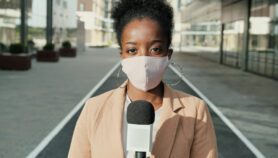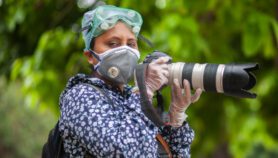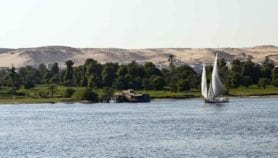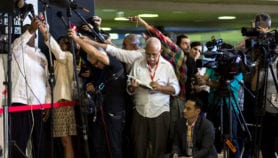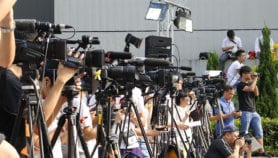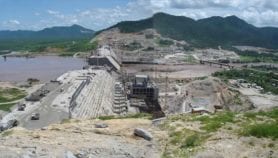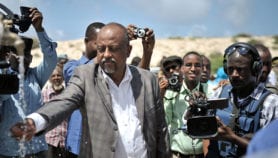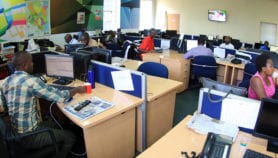By: Martin Redfern
Send to a friend
The details you provide on this page will not be used to send unsolicited email, and will not be sold to a 3rd party. See privacy policy.
- Getting to know the listener
- Finding a story
- Placing a story
- Recording an interview
- Editing, packaging and producing
- Editing techniques
- Writing for radio
- Speaking for radio
- Technical matters
- Delivery
Martin Redfern takes us through the unique aspects of making science news for the radio.
Getting to know the listener
Radio is a very personal medium. In switching on, a listener is inviting you into his or her private space, whether it is at home, in the car or at work. If you get it right, you can have their undivided attention, almost as if you were having a one-to-one conversation. If you get it wrong, they can quickly succumb to boredom and switch off.
You need to try to be all things to all people. Overall, the audience for science programmes ranges from those with little or no science education to those with science degrees, and perhaps even postgraduate qualifications. What unites them all is an interest in finding out more. My guiding rule is that it doesn’t hurt to underestimate their prior knowledge. But one should never underestimate their intelligence.
Finding a story
Significance: is this something that people will be talking about in the days, months or years to come?
Relevance: will what you’re reporting change — or at least affect — listeners’ lives?
Practicality: is there something that people can actually do as a result of this story that will help them or the world?
Interest: science doesn’t necessarily have to be useful; it can simply be fascinating, as much a part of our culture as a work of art or a rock band.
Entertainment: the story might just be fun, or an excuse for some good sound effects!
There are many sources of good science stories. Thanks to email and the Internet, the problem is usually not finding stories but picking which to use out of the avalanche.
Ultimately, the sources of most stories will be scientists in research labs, institutes and universities, but news of their work can come by many routes:
- Press releases: a good press release will have done much of the work for you. But don’t forget that the author’s interest in writing the release may be different from yours. And remember that for radio, it’s the story that counts, not the institute, the conference or the journal;
- Scientific journals and online publishers: the major ones usually issue their own press releases, pointing out the more significant stories. But reading through the abstracts of specialist journals does sometimes lead to a good story that no one else has spotted;
- Scientific conferences: preliminary results are often announced at conferences before they get submitted to a journal. Many offer free accreditation to bona fide journalists. One advantage is that the speakers are likely to be available for interviews. But attending may be a luxury; and
- Personal contacts: these can be great if you can get to know the main players. A list of media-friendly contacts is also invaluable if a big story breaks and you need expert comment.
Placing a story
The first thing to do if you want to place a story with a radio station is to become familiar with the station, and with the programme or format in which your piece might appear. Listen to it. Then get in there somehow and become known. Don’t expect a job at once, but they may let you help or work freelance.
Recording an interview
The staple food for programme making is the interview. Even if all you will broadcast is your own report, it’s often still worth interviewing scientists involved in the story you are reporting to help you understand it (and being a science reporter is a wonderful way to get to talk to some interesting people!)
Who to interview? Very often, you will be reporting an original piece of research, as announced in a journal or at a conference. In that case, the obvious person to interview is the lead researcher involved. He or she should know the answers to your questions and, hopefully, be prepared to give them. Sometimes, the most senior ‘author’ is the head of department and, though lending support, was not involved directly.
Avoid him/her if you can: they’ll only want to talk about the institute and its funding. Very junior researchers too can be a problem, as they are often shy and inexperienced and feel they need to hide behind technical jargon. If the scientists directly involved don’t give all you need, you can then turn to other experts in the field for comment on the implications of the work.
For stories triggered by external events such as natural disasters or health issues, the choice is wider. Look first for experts in the specific subject at the local university or research institute. Maybe the institute has a press officer who can put you in touch with the right person. Otherwise ask for the head of the relevant academic department. If you can’t find a practising scientist, maybe a specialist writer or journalist can give you the comment you need, but beware anyone without a good track record.
For radio journalists — unlike those who work in print — it’s always best to interview face to face. Telephone interviews are often not good enough quality for radio stations. The high-quality alternative involves a studio at each end, linked by a digital ISDN line. If you’re lucky, a radio station may have an ISDN studio, making it easy to get a quality interview with someone in a different country or continent. But check the cost and technical compatibility of the equipment first.
If you can meet your interviewee in person, there are three main ways of conducting the interview: the scientist’s office, the radio station studio or on location.
The radio station may give you the best sound quality. But is it fair to make the scientist travel there? If there’s a good location with appropriate sound effects in the background, it can bring the story to life. But it’s the hardest to do, and irrelevant noise can wreck a good interview.
We’re surrounded by cacophony, and the radio journalist’s job is to get away from most of it. So use your ears and find a quiet room for your interview, shut the window, turn off the fan and swelter in silence!
Sit in the quietest part of the room, close to your interviewee. Don’t sit on the other side of a desk — that will cause sound reflections. I prefer to sit next to my interviewee rather than opposite. Try holding a heavy microphone at arm’s length for 20 minutes and you’ll see why!
Remember that the closer the mic is to the interviewee, the more of him or her you’ll get, and the less of any background noise. With a good, omni-directional interview mic (see technical note), you can have the mic almost touching the interviewee’s bottom lip. But don’t forget to bring it as close to you when you ask your questions.
Make sure you’ve got good, working recording equipment before you set out. Always test it. Nothing is more embarrassing than sitting down for your interview only to find that you’ve left the mic cable behind, or the batteries are flat.
Whether the recorder belongs to the radio station or is your own, make sure that you are very familiar with it. Interview your friends until they are sick of you, so that you can operate the recorder in your sleep. Then you can concentrate on asking the right questions, rather than getting the machine to work properly.
If possible, always use headphones when recording, so that you can notice any nasty noises. They won’t prove you’ve got a good recording. But at least they show you that the mic is working.
Have a brief chat with your interviewee before you start recording. Agree the sort of level and length needed for the interview, and the direction in which you plan to head. But don’t rehearse the full interview. Often the first take is the best.
A good interview should be like a conversation. So, although it’s good to plan the interview, don’t read out written questions. And don’t let your interviewee read from notes either.
Listen to the answers, and respond accordingly. But try to take a logical route from one question to the next. You don’t have the luxury of re-ordering the answers afterwards in the way that a print journalist can.
Don’t show off, and don’t ask long, involved questions that only need yes or no as an answer. If you try to impress with your knowledge of technical jargon, your interviewee will assume that that is the level at which he should answer, so you’ll get jargon back. Don’t act stupid, but keep it simple — the interviewee will follow suit.
Encourage the interviewee to answer in whole sentences; it will make it much easier to find extracts for an edited package later. And don’t keep interrupting with murmurs of agreement. Usually it’s best not to interrupt at all, particularly with nervous interviewees.
If they do slip into scientific or technical jargon, ask a quick explanatory question. Only interrupt if they talk complete gobbledegook, or appear set for a 30-minute lecture. Otherwise let them finish what they are saying, then tell them that their answer was great, but that you’d like one more try at a simpler or shorter level.
Put critical points to your interviewee, particularly if their work is controversial. But give them the chance to explain it first. And remember that if you are going to include comments from people with different views in your piece, you have a duty to put those comments to the other participants.
Normally, giving the interview is sufficient proof of the interviewee’s permission to broadcast it. It is not usual to let an interviewee listen and request changes to the edited version. But that gives you an obligation to represent what was said fairly, and not to take quotes out of context.
Location recording can bring a story to life. But remember that the listener can only ‘see’ what they hear! Noises of things going on that are relevant to the story are great; so are demonstrations that make interesting sounds. Even silent but amazing spectacles can come over on radio if you and your interviewee describe them and sound suitably excited.
It’s always best to concentrate on getting the best voice recordings (that is, working with the mic close) for the interview, and then recording the background effects free of speech to mix in later. This gives you more control over the relative sound levels.
Try to avoid irrelevant noises, such as traffic, aircraft or other voices. And use your imagination. Traditionally, location recordings tend to begin, "I’m standing in front of…" That has become very clichéd. Try variations: "The test tubes in front of me in this laboratory are full of green squirmy things…" Or whatever!
Finally, always listen back to a few seconds of the recording before you leave, just to make sure you didn’t do the whole interview with the pause button on.
Editing, packaging and producing
Recording the interview is just the start. If you’re lucky, your interviewee will be highly articulate, and the result will be just the length you want; when that happens, you can deliver your tape and go home early.
But that’s seldom the case. Usually you end up with one, two or three long interviews when your editor only wants a package a few minutes long that encapsulates the story, along with both colour and simplicity. When that happens, you have to edit.
No matter how you’re going to do the editing, or who is going to do it, the first thing to do is to find your way around the recording. ‘Logging’ your tape doesn’t require a full transcript, but does at least demand pointers to the questions and to the major components of the answers, each identified by time markers that can be matched to the recording.
When you do this, it can often become clear quite quickly what can be rejected. You have to be brutal. If you have 20 minutes of recorded interviews, but must make a four-minute package, four-fifths must go. Better not to grieve over it but concentrate on the one-fifth that’s best.
If you are ‘packaging’ — in other words, putting your own scripted narration around extracts from the interview — concentrate on the lively clips. If an interviewee takes two minutes to say something you can summarise in a 20-second link, cut him out. Save the clips for the good bits.
Finally, even if you don’t do the editing yourself, it is still worth planning out the process, so that you know, for example, that the third clip begins 3 minutes and 35 seconds in to the second interview, and ends after 43 seconds with the words "big explosion". Then you can stay in control as you supervise the editing.
Editing techniques
But you may decide to do your own editing. The traditional way of doing this, using audiotape, was to copy the material on to magnetic tape, and then cut it with a razor blade and stick the bits together. That was actually quite quick and effective, at least where you could afford plenty of tape — and where heat and humidity didn’t make the resulting tape fall apart on transmission.
Today, however, most radio journalists use digital editing. Many of my colleagues at the BBC use a system called Sadie. It’s powerful and effective, but depends on thousands of dollars’ worth of hardware and takes time to learn.
I use software called Cool Edit Pro, which runs on my standard home PC and costs about US$200. The only extras I use are a bigger-than-average hard disc drive, to accommodate all the audio files, and a better-than-average sound card, to get the audio in and out in high quality. The edited interview, package or even complete programme gets burnt to CD in glorious digital quality.
There are other comparable audio editing packages. Some of the simpler ones are even free to download from the Internet.
Writing for radio
Every radio programme you make will have parts that need to be written out beforehand, or scripted. This may be your straight voice ‘despatch’, the introduction to your interview, the links in your package, or the narration for your feature.
If you have ended up with good clips from your interviews, you only need a minimum of script to link them together. But even writing that is an art. A good radio monologue can be almost poetic, with every word adding meaning and colour.
Some say that writing for radio is very different from writing for print. I don’t think it should be. We read print with an ‘inner voice’, and the same readability tests should work with radio.
The difference is that radio listeners don’t get a second chance. If they don’t fully understand, they can’t go back to the beginning of the paragraph: the meaning has to get through first time.
So get rid of passive tenses and subordinate clauses. Stop trying to be clever and be direct. No verb: no problem! Like this sentence. Write as you would speak, and make every word count.
Speaking for radio
Radio is conversational. So make an effort to lift the words off the page. Far too many radio correspondents broadcast in a ‘sing-song’ voice that they would never use in conversation. And sometimes the intonation makes it sound as if they don’t understand what they’re reading.
Write the way you would speak, and speak it as if it wasn’t written. I find it very difficult to read other people’s scripts. If you need to do this, ask if you can change it to your own phrasing.
Always read through a script to yourself before recoding it, speaking the words out loud, or at least inwardly. Never broadcast anything you don’t understand. Speak naturally, but with a little extra emphasis. If you are naturally extrovert, avoid making a fool of yourself. But if you are slightly introverted, pretend you’re acting up a little.
If you stumble with your words, don’t worry. If your remarks are being recorded for later transmission, and there is a chance to edit, just go back to the sentence before and begin it again. If it’s live, just steady yourself up and keep going. Sometimes live radio has that extra adrenaline that no number of retakes can match, so that the listener forgives even a stumble.
Technical matters
Thirty years ago, all radio journalists had to take heavy open-reel recorders out on interviews. Then came the Sony Walkman Pro, a small, battery-powered cassette recorder of amazing quality and reliability.
Now we have entered the digital age, where the potential quality is better than ever before — and the potential pitfalls are greater. With analogue recorders, if your machine started to run short of power, at least it faded slowly, continuing to produce something useable. When digital goes wrong, everything is lost. So always test your recording kit before you set out, and check your recording before you let the interviewee go home.
There are several digital formats to choose from. I use DAT — Digital Audio Tape. I find it top quality, versatile, controllable and (usually) reliable. But my employer (the BBC) is paying. Both the recorders and the tape are expensive, and so are repairs if things go wrong.
Many radio journalists now use minidisk recorders. They are much cheaper than DAT, and the quality is almost as good – if you get a reliable one and use it carefully. But if you’re not familiar with the machine, it’s very easy to delete or record over an entire valuable interview.
Such mistakes may become more difficult with a new series of recorders that is now becoming available. These use neither tape nor disc, but a solid-state computer memory chip. They also have the advantage that recordings can be downloaded directly into a computer for editing.
Whatever technology you use, make sure that it has a good quality microphone input, and a way of controlling the input level. Some recording machines have ‘automatic level control’ that boosts the quiet bits and compresses the loud stuff. That can prevent distortion. But it’s not the same as manual control, and you can sometimes hear it ‘breathing’ as it pumps the background level up and down.
All good recorders have some sort of level meter. Look at it, and make sure it’s moving up and down during the recording — while never going into the red. Check sound levels before you start the main recording. I always use the check to ask my interviewees their names and affiliations. Then you get the pronunciation right, and you also have an identification recorded at the start of the tape.
The most important thing is the microphone. Don’t be fooled into using a built-in mic on the recorder. Those are only intended for taking dictation! And don’t buy the little plastic stereo mic that a dealer may try to sell you. It is likely to be low quality, and will certainly be prone to handling noise and ‘popping’ if used close in an interview situation.
You need a good, reliable, dynamic, omni-directional, mono interview mic. The AKG D230 is OK; the Beyer M58 is better. They are both made in Europe. The Electrovoice RE50, made in the United States, is also very good.
Even with high quality microphones, however, and even when recording indoors, always use a foam windshield. As well as cutting wind noise it reduces the risk of ‘explosive’ consonants — such as Ps — blasting the mic.
Finally, if you are determined to use stereo, use two of the above, one for each speaker. Alternatively, you can use a good stereo mic on a stand between the speakers. But you should only do this in a quiet, studio-quality space.
Delivery
If you’ve done the recording or the editing at a radio station, there’s not likely to be anything else to worry about. But if you haven’t been lucky enough to do this, you have to get the finished product to them.
If you’ve edited your radio programme on a personal computer that has a CD burner, make a CD of it. There should be no loss in the digital quality.
If you’re handing in the raw interview on audiotape, give them the original, even if you keep a copy. Each generation of non-digital copying lowers the quality. Don’t expect a perfect copy of your beautiful interview if all you’ve got to make it on is your kid’s cheap cassette! If you can, deliver your item or programme in person. But if that’s too slow or distant, there are other ways.
If there’s time, mail or express mail. But keep a good safety copy. If the technical facilities are available, play it in real time over an ISDN line. Or send it electronically over the Internet.
But be warned. One minute of stereo, CD quality audio takes up ten megabytes! Mono halves that and saving it as a (128 KHz) MP3 file reduces either of those to a fifth. But even at a megabyte a minute, that’s still too big for many email systems.
The only alternative is to FTP it. FTP stands for file transfer protocol and is a way of sending lots of data over the Internet. But there needs to be an FTP server to send it to (maybe your radio station has one). And, unless you have a broadband Internet service, it can take a long time to upload.
Eventually, however, all is complete. Then all you have to do is tell Mum to switch on her radio and listen.
Martin Redfern, Senior Producer, BBC Radio Science Unit
This article was previously part of SciDev.Net’s e-guide to science communication and has been reformatted to become this practical guide.



